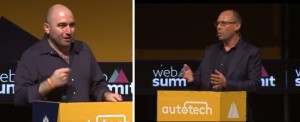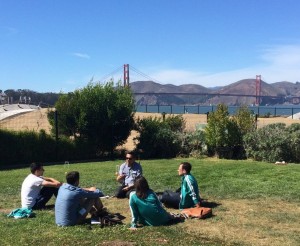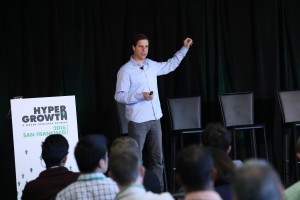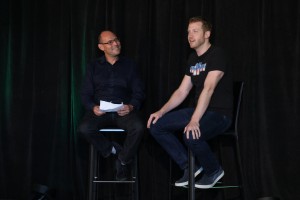
My Debate with George Arison, CEO of Shift, at Web Summit in Lisbon
I was invited to speak at the Web Summit in Lisbon this week to debate George Arison on a hot topic: the arrival of truly autonomous vehicles. You can watch the debate here at 1hr. 24min. Maven Ventures has invested in three companies in the space, including Cruise Automation, which helped to launch the industry into mainstream conversations after its acquisition by General Motors.
While the buzz has certainly picked up, the autonomous vehicle market is still underhyped. Next to the Internet, it’s the most profound and transformative technology innovation in our lifetimes. Most people predict it will be 20 years or more until true, level 4 or level 5 autonomous vehicles will be on the roads. But it’s going to happen much sooner. As I shared on stage at the Web Summit this morning, here are the 10 reasons why I believe level 4 or 5 autonomy will be widespread within the next 5-10 years:
- Saving lives: over 1 million people die in car accidents each year around the world, with over 35,000 in the US alone. Autonomous vehicles will nearly eliminate these fatalities.
- Better for the environment: with fewer cars on the road, nearly all of them electric, pollution from cars will drastically decrease.
- Less congestion: our cities are locked-up with traffic congestion, making it tough to get around. Autonomous vehicles will decrease the traffic congestion with more predictable transit, fewer vehicles, and no need to find that elusive parking spot.
- More productive society: instead of sitting behind the wheel on increasingly lengthy daily commutes, we will be able to rest, work, and relax. This will increase productivity, while decreasing stress and road rage.
- Inclusive transit for everyone: autonomous vehicles will be safer for our aging population, allowing seniors to retain independence longer, as well as more accessible for blind, deaf, and other individuals who couldn’t otherwise drive.
- More affordable: the need for car ownership will be greatly reduced as more people take advantage of ride- and car-sharing, decreasing the amount of money spent on vehicles, insurance, registration, and maintenance.
- The technology is improving: the cost of hardware is dropping rapidly, so component pieces integral to autonomous driving such as LIDARs and cameras are more accessible. More engineers are developing expertise in related fields, creating better software and hardware.
- Governments are moving quickly: the Department of Transportation and President Obama have both stated that this is a priority, and the National Highway and Transportation Safety Administration has already released its first policy updates.
- There’s so much money at stake: between Tesla, Google, General Motors/ Cruise, Apple, Uber, and many more companies, there are hundreds of billions of dollars in market opportunity up for grabs.
- It’s already happening: the Cruise team has autonomous vehicles on the road, Google has had fully autonomous cars all over Silicon Valley for years, Uber famously put self-driving cars on the streets of Pittsburgh, and the recently acquired Otto made a big splash with its first autonomous truck delivery. Not only is autonomous driving coming faster than most people think — it’s already here.



